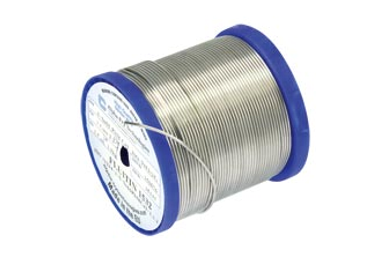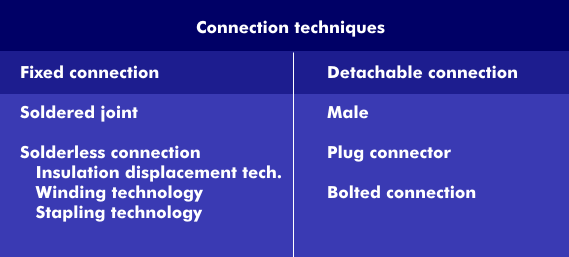soldered connection
Soldered connections are non-detachable connections in which the connection between two or more conductors is made by a conductive material, usually solder.
When making the connection, the solder is wetted with a flux and heated by heat from a soldering iron. The solder liquefies and flows in a liquid state between the holes and conductors to be connected. Diffusion creates an alloy between the solder and the conductors that firmly bonds the conductors or metals to be joined. Such a solder connection can be released again by heating the solder.
The solder is an alloy of different metals. Inelectronics, soft solders are used whose melting points are between 210 °C and 250 °C, which is below the melting point of other metals. Soft solders are lead-free and consist of tin and silver (SnAg) or tin and copper. In the past, they were made of tin and lead (SnPb). In order for the solder to flow on the surface of the conductors, flux is used to prevent oxidation of the surfaces of the conductor and solder.
The solder connection is a classic connection technique used for the connection of individual conductors and in PCB technology, both in through-hole technology( THT) and SMT technology. In THT technology, the solder connection is made using wave soldering technology in a wave solder bath. In this process, the solder pins of the electronic components, connectors and contact strips are connected to the pads of the printed circuit board. In SMT technology, on the other hand, the reflow process is used.


